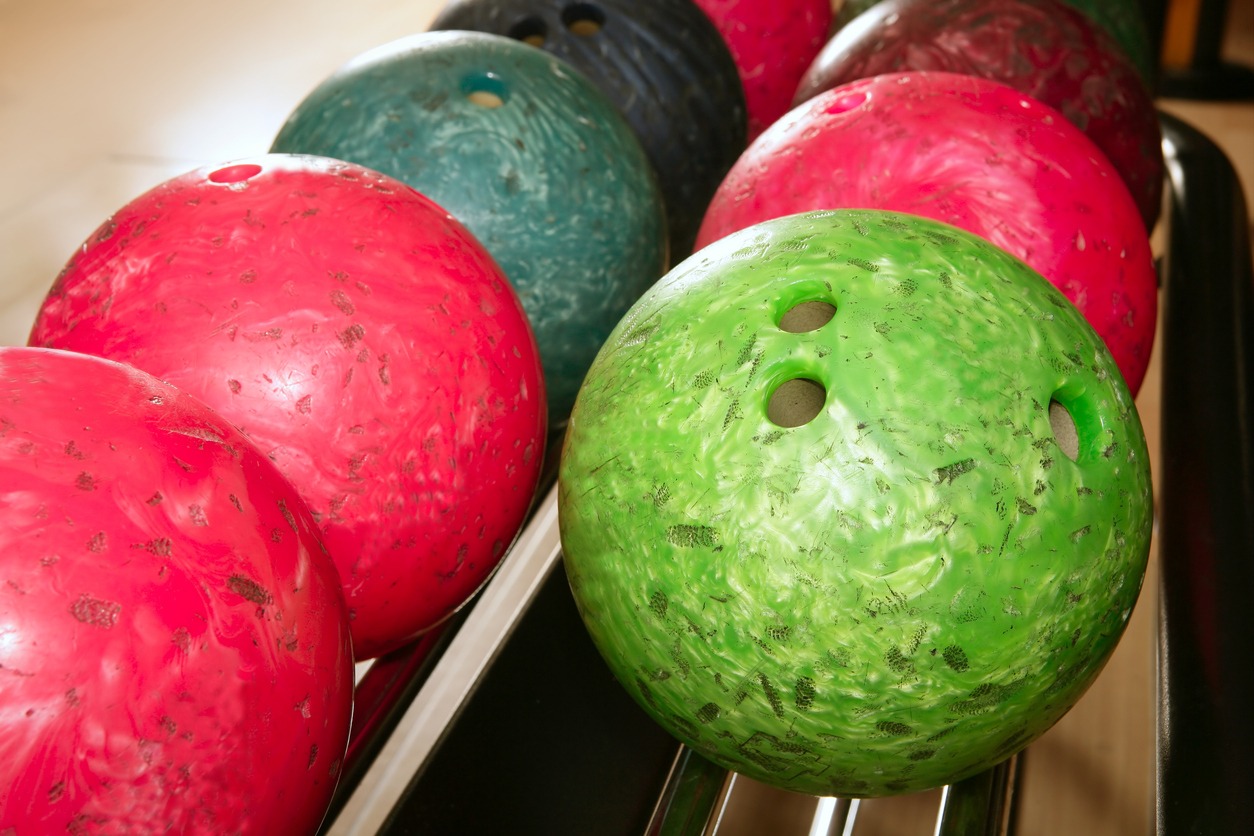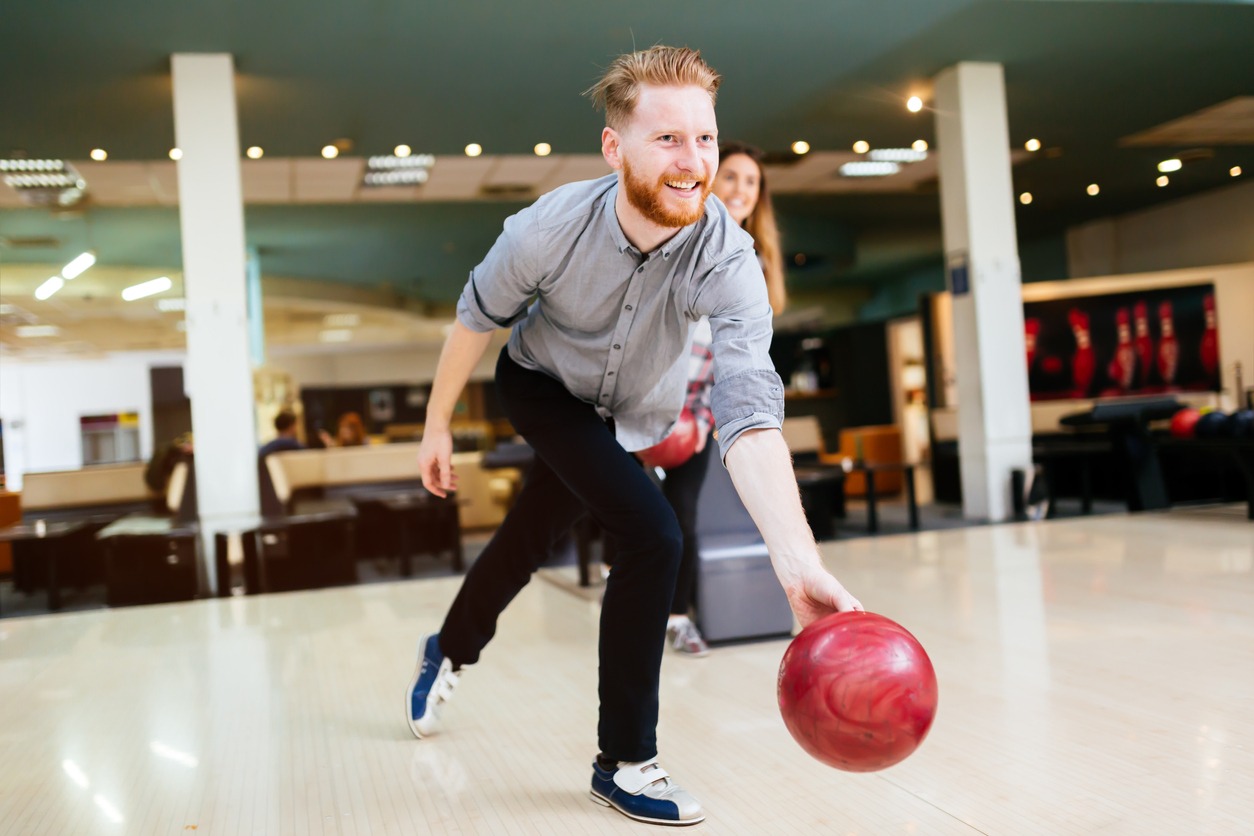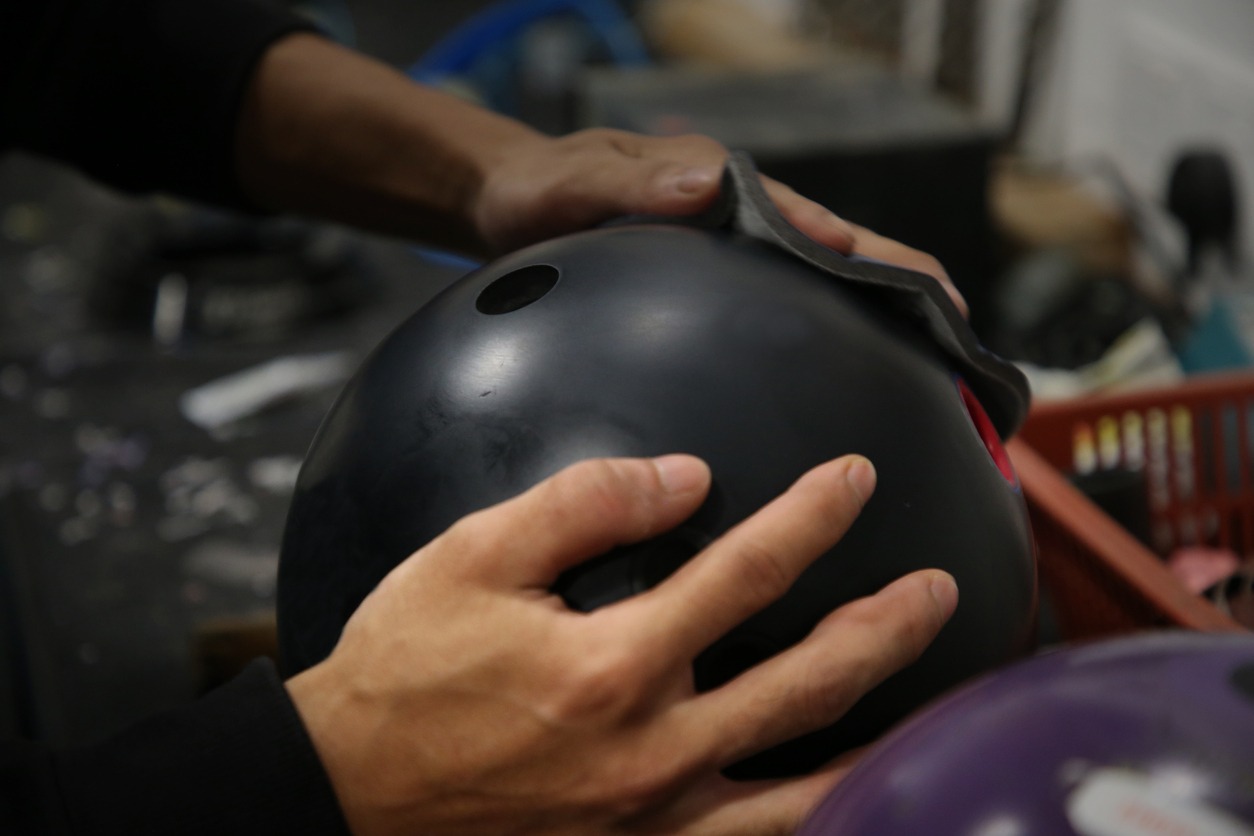Welcome to the wonderful world of bowling! Picking the right ball is not just about finding the most colorful one in the alley; it’s about understanding your style, the ball’s weight, its material, and how all these elements come together for that satisfying strike. Whether you’re a beginner looking to make your first purchase or an experienced player aiming to refine your game, this guide will help you strike the perfect balance. So, lace up those bowling shoes, and let’s get started on this fun and informative journey down the bowling lane!
Understanding the Basics of Bowling Ball
In the realm of bowling, the journey to selecting the ideal ball begins with a basic understanding of the different types available, each with its unique characteristics and advantages.
- Classic Plastic or Polyester balls – known for their durability and straightforward roll, making them a favorite among beginners or those who bowl straight.
- Urethane ball – a step up in terms of providing a more controlled hook and greater durability, ideal for bowlers ready to experiment with a bit of spin.
- Reactive Resin balls – these are for those seeking more hook potential and versatility on varied lane conditions, offering a significant grip on the lane surface
- Particle (or Proactive) balls – These are usually for seasoned players, famous for their gritty surface, giving advanced players remarkable control and a strong hook.
- Hybrid Reactive Balls – A choice for bowlers who want a mix of smooth reaction and down-lane motion. Combine the properties of solid and pearl reactive balls, versatile on a range of oil patterns.
But it is not just about the type of ball. Weight plays a pivotal role in your game too. It’s crucial to choose a ball that aligns with your strength and bowling style. A ball too heavy might hamper your throw, while one too light could lead to less control and power. The key is to find that sweet spot in weight where comfort meets efficiency in your throw.
Then comes the aspect of size and finger hole fit. The grip on your bowling ball is as vital as the shoes on your feet. A ball that fits your hand comfortably, where the finger holes are neither too tight nor too loose, can significantly impact your game. This perfect fit ensures not only a better release but also reduces the risk of injury, allowing for a smoother, more enjoyable bowling experience.
Additionally, for those interested in purchasing a top-quality bowling backpack online, please follow the provided link.
Factors to Consider
When venturing into the selection of the perfect bowling ball, several key factors come into play, each significantly impacting your game.
Age
- Kids – Typically, the bones of kids are weaker. They cannot lift the heavyweight thing. So, Kids below 12 years should prefer lightweight bowling balls less than 10 lbs.
- Adults – An adult person can choose any ball, whether it is heavyweight or light. Make sure that the ball will fit them properly. But they have to keep two things in mind to selecting the bowling ball – comfort and controllability. These are applicable for all ages and all skilled players.
- Seniors – Seniors have to be cautious while choosing a bowling ball. Usually, their physical condition is weaker. So, they should prefer a lightweight bowling ball. However, the elderly who have any medical issues should not bowl with a doctor’s consult.
Skill level
- Beginners – often benefit from simpler, more straightforward balls like plastic or polyester, which help in mastering basic techniques
- Intermediate players – they might lean towards balls that offer a moderate hook, aiding in developing more nuanced skills
- Pros – Experienced bowler or pro bowlers can choose their bowling ball. Because they have already passed their trial-and-error period. However, if you are still confused you should choose the ball which has high hook potential and is perfect for medium to heavy oil lanes.
Lane condition (particularly the oil patterns)
Different lanes have varying amounts of oil spread in distinct patterns, affecting how the ball moves on the lane. A ball that works wonders on a heavily oiled lane might not perform as well on a dry lane. Understanding these conditions can guide you in choosing a ball that complements the lane’s characteristics, enhancing your performance.
- Dry Lane – The dry lane has little oil or no oil. Use a polished bowling ball for a dry lane. The bowling ball, which has a less aggressive backend reaction, is perfect for dry lanes.
- Medium Oil Lanes – The balls that have average hooking potential are suitable for medium oil lanes. Medium oil balls are used as a typical house shot. The bowler who is not too strong or too weak in the most oil lane conditions can use the medium oil ball.
- Heavy Oil Lanes – Oil is heavy in this lane condition. The most hooking potential bowling ball is used in heavy oil lane conditions. The bowling ball is a little expensive, but it is worth of value. Heavy oil bowling balls are also used in long oil patterns or flat sports patterns. You have to choose the bowling ball which absorbs oil and rolls smoothly in heavy oil conditions. You can see many bowling balls designed for medium to heavy oil lanes in the market.
Ball Core
In bowling, the core of the ball, also known as the weight block, is an essential component that significantly influences the ball’s performance. The core is located inside the bowling ball and is responsible for creating the ball’s distinctive rolling and hooking patterns. There are primarily three types:
- Pancake cores – These are often found in beginner balls, and keep the motion straightforward and predictable
- Symmetrical core – These offer a balance, suitable for a variety of styles and conditions, and are favored for their consistent behavior
- Asymmetrical cores – The choice for advanced players who seek aggressive hooks and nuanced control, as they create significant motion and differential in the roll.
Coverstock
The coverstock which is the outer material of the ball, greatly influences its interaction with the lane. Different materials, from smooth polyester to textured reactive resin, determine how much the ball grips the lane, affecting its motion and hook potential.
The right coverstock can dramatically enhance your ball’s performance, tailored to your style and the lane conditions you most frequently encounter. Choosing the right combination of these factors can elevate your game, turning the complex task of selecting a bowling ball into a strategic advantage.
-
- Plastic/Polyester – Affordable and durable, ideal for beginners. Offers minimal hook and rolls straight, best for dry lanes.
- Urethane – Provides a smooth, controllable hook. Better grip than plastic, suitable for slightly oily lanes. Preferred for predictable ball motion.
- Reactive Resin
-
- Solid Reactive – Strong, even hook with great traction, especially on oily lanes.
- Pearl Reactive – Travels further down the lane, sharper breakpoint, good for medium to light oil.
- Hybrid Reactive – Combines solid and pearl features for a balanced reaction on various lane conditions.
- Particle (Proactive) – Embedded particles for extra grip, designed for heavy oil conditions, less common with advanced reactive resin technology.
Maintenance and Care
Maintaining your bowling ball is essential to ensure it performs at its best every time you hit the lanes. Regular cleaning is key. After every bowling session, wipe down your ball with a clean, soft cloth to remove the oil and dirt it picks up from the lane. This simple step prevents the buildup of grime, which can affect the ball’s performance.
For a deeper clean, use a specialized bowling ball cleaner. Apply it according to the instructions, ensuring that it penetrates the pores of the ball for a thorough cleanse. This not only keeps your ball in top condition but also extends its lifespan, making it a worthy investment in your bowling arsenal.
Apart from cleaning, proper storage of your bowling ball is crucial. Avoid leaving it in extreme temperatures, like a hot car or a cold garage, as these conditions can cause the ball to crack or warp. Instead, store it in a cool, dry place, preferably in a bowling bag that offers cushioning and protection.
Additionally, it’s a good idea to give your ball a professional resurfacing and oil extraction treatment periodically. This process rejuvenates the ball’s surface, restoring its original performance characteristics. Remember, a well-maintained bowling ball not only improves your game but also brings a sense of pride and professionalism to your bowling experience.
Tips for Testing Bowling Balls
- Visit a Bowling Pro Shop– Start at a pro shop where you can find a wide variety of bowling balls. The staff there are usually experienced bowlers who can provide valuable advice tailored to your style and skill level.
- Focus on Feel– Pay attention to how the ball feels in your hands. The grip and weight are critical factors. Make sure the ball isn’t too heavy or too light and that your fingers comfortably fit into the holes.
- Try Different Weights– Don’t stick to just one weight. Experiment with balls slightly lighter and heavier than what you’re used to. Sometimes, a slight adjustment in weight can significantly improve your control and comfort.
- Test on Different Lane Conditions– If possible, try bowling on lanes with different oil patterns. This will give you a sense of how various balls perform under varying conditions and help you choose a versatile ball.
- Observe Ball Reaction– Pay attention to the ball’s reaction on the lane. How does it hook? How does it roll on the dry or oily parts of the lane? Look for a reaction that matches your style of play.
- Don’t Rush the Process– Take your time with each ball. Bowling a few frames with each option will give you a better feel for its performance and how it complements your technique.
- Seek Advice– Don’t hesitate to ask for advice from more experienced bowlers or coaches. They can provide insights based on their observations of your bowling style.
- Take Notes– Keep track of the balls you’ve tried and your impressions of each. Note the ball’s weight, coverstock, and how it felt to play with it. This will help you make an informed decision later.
Conclusion
After reading the article now, you can easily find your bowling ball according to your choice. There are unlimited bowling balls in the market. The perfect bowling ball not only improves your performance but also increases your enjoyment of the game. So, embrace the process, enjoy the journey, and roll your way to bowling success!




